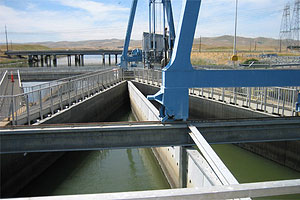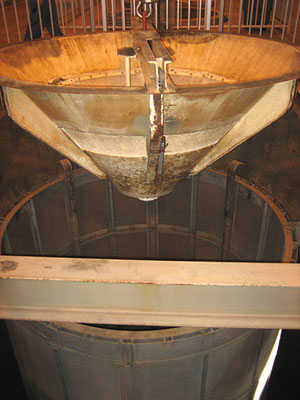Talk about a wild ride.
 Every year, millions of fish make a strange and harrowing detour through the Skinner Fish Facility, part of the State Water Project's facilities in the Delta.
Every year, millions of fish make a strange and harrowing detour through the Skinner Fish Facility, part of the State Water Project's facilities in the Delta.
In my last post, I wrote about my visit to the Banks Pumping Plant, whose giant pumps slurp water from the Delta to help quench California's thirst. As the volumes of water are sucked up, both resident and migrating fish come along for the ride. The Skinner Facility, in operation since 1968, was built to protect fish from being killed at the pumps--an effort that sadly is not as successful as one would hope (more on that below).
I was amazed to learn there is a whole art and science to fish screens, which range from physical barriers--called positive barriers--like perforated plates or wire mesh, to behavioral barriers like sound, light, or other stimuli aimed at keeping fish away. Well-designed screens minimize both entrainment (fish being pulled into the pump or diversion) and impingement (fish being trapped or injured against the screen itself due to water velocity).
Both physical and behavioral barriers are used at the Skinner Facility. Fish being pulled toward the pumps first encounter a trash rack that diverts many bigger fish, along with floating debris. Next, fish encounter a large, v-shaped array of metal louvers. The louvers create turbulence that functions as a behavioral signal, encouraging the fish to swim away into bypass pipes that function, as our tour guide put it, like "a big vacuum system."

